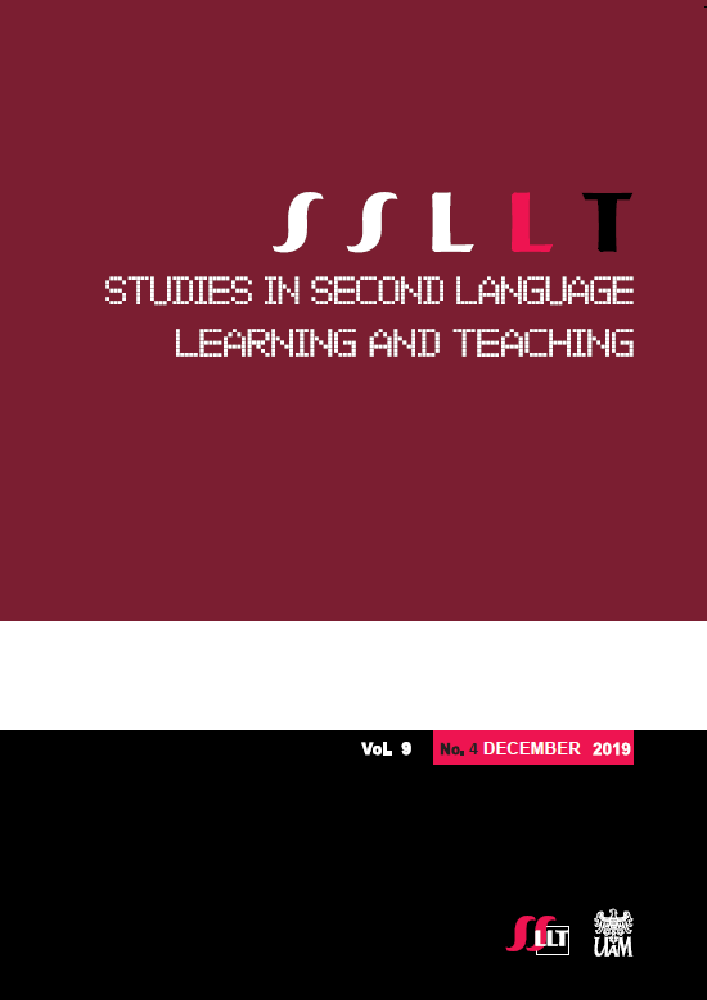Abstract
In a large scale survey of teachers’ perceptions of the challenges they face in teaching English to young primary school learners (Copland, Garton, & Burns, 2014), some of the key issues that are identified are as follows: teaching speaking, using only English in the classroom, enhancing motivation, maintaining discipline, catering for different individual needs (including special educational needs), dealing with parents, and teaching grammar as well as reading and writing. The relevance of Early Instructed Second Language Acquisition, edited by Rokita-Jaśkow and Ellis, is clearly shown by the fact that it addresses most of these central issues.
References
Copland, F., Garton, S., & Burns A. (2014). Challenges in teaching English to young learners: Global perspectives and local realities. TESOL Quarterly, 48(4), 738-762. http://doi.org/10.1002/tesq.148
Scheffler, P. (2015). Introducing very young children to English as a foreign language. International Journal of Applied Linguistics, 25(1), 1-22. http://doi.org/10.1111/ijal.12035
Scheffler, P., & Wysocka, H. (2013). Pochwała naturalności, czyli język obcy oswojony. Języki Obce w Szkole, 3, 76-85.
License
1.1 The Author hereby warrants that he/she is the owner of all the copyright and other intellectual property rights in the Work and that, within the scope of the present Agreement, the paper does not infringe the legal rights of another person. The owner of the copyright work also warrants that he/she is the sole and original creator thereof and that is not bound by any legal constraints in regard to the use or sale of the work.
1.2. The Publisher warrants that is the owner of the PRESSto platform for open access journals, hereinafter referred to as the PRESSto Platform.
2. The Author grants the Publisher non-exclusive and free of charge license to unlimited use worldwide over an unspecified period of time in the following areas of exploitation:
2.1. production of multiple copies of the Work produced according to the specific application of a given technology, including printing, reproduction of graphics through mechanical or electrical means (reprography) and digital technology;
2.2. marketing authorisation, loan or lease of the original or copies thereof;
2.3. public performance, public performance in the broadcast, video screening, media enhancements as well as broadcasting and rebroadcasting, made available to the public in such a way that members of the public may access the Work from a place and at a time individually chosen by them;
2.4. inclusion of the Work into a collective work (i.e. with a number of contributions);
2.5. inclusion of the Work in the electronic version to be offered on an electronic platform, or any other conceivable introduction of the Work in its electronic version to the Internet;
2.6. dissemination of electronic versions of the Work in its electronic version online, in a collective work or independently;
2.7. making the Work in the electronic version available to the public in such a way that members of the public may access the Work from a place and at a time individually chosen by them, in particular by making it accessible via the Internet, Intranet, Extranet;
2.8. making the Work available according to appropriate license pattern Attribution 4.0 International (CC BY 4.0) as well as another language version of this license or any later version published by Creative Commons.
3. The Author grants the Publisher permission to reproduce a single copy (print or download) and royalty-free use and disposal of rights to compilations of the Work and these compilations.
4. The Author grants the Publisher permission to send metadata files related to the Work, including to commercial and non-commercial journal-indexing databases.
5. The Author represents that, on the basis of the license granted in the present Agreement, the Publisher is entitled and obliged to:
5.1. allow third parties to obtain further licenses (sublicenses) to the Work and to other materials, including derivatives thereof or compilations made, based on or including the Work, whereas the provisions of such sub-licenses will be the same as with the Attribution 4.0 International (CC BY 4.0) Creative Commons sub-license or another language version of this license, or any later version of this license published by Creative Commons;
5.2. make the Work available to the public in such a way that members of the public may access the Work from a place and at a time individually chosen by them, without any technological constraints;
5.3. appropriately inform members of the public to whom the Work is to be made available about sublicenses in such a way as to ensure that all parties are properly informed (appropriate informing messages).
6. Because of the royalty-free provision of services of the Author (resulting from the scope of obligations stipulated in the present Agreement), the Author shall not be entitled to any author’s fee due and payable on the part of the Publisher (no fee or royalty is payable by the Publisher to the Author).
7.1. In the case of third party claims or actions for indemnity against the Publisher owing to any infractions related to any form of infringement of intellectual property rights protection, including copyright infringements, the Author is obliged to take all possible measures necessary to protect against these claims and, when as a result of legal action, the Publisher, or any third party licensed by the Publisher to use the Work, will have to abandon using the Work in its entirety or in part or, following a court ruling in a legal challenge, to pay damages to a third party, whatever the legal basis
7.2. The Author will immediately inform the Publisher about any damage claims related to intellectual property infringements, including the author’s proprietary rights pertaining to a copyrighted work, filed against the Author. of liability, the Author is obliged to redress the damage resulting from claims made by third party, including costs and expenditures incurred in the process.
7.3. To all matters not settled herein provisions of the Polish Civil Code and the Polish Copyright and Related Rights Act shall apply.





